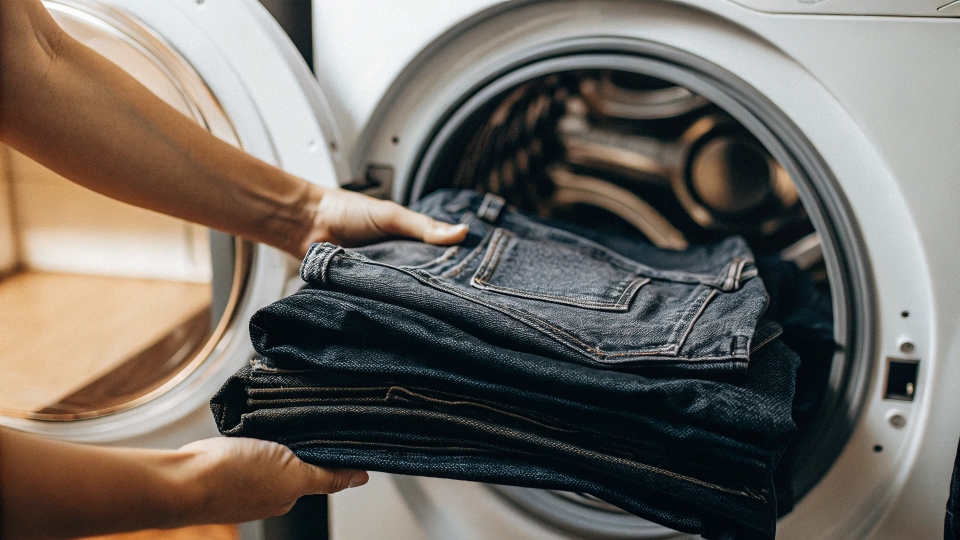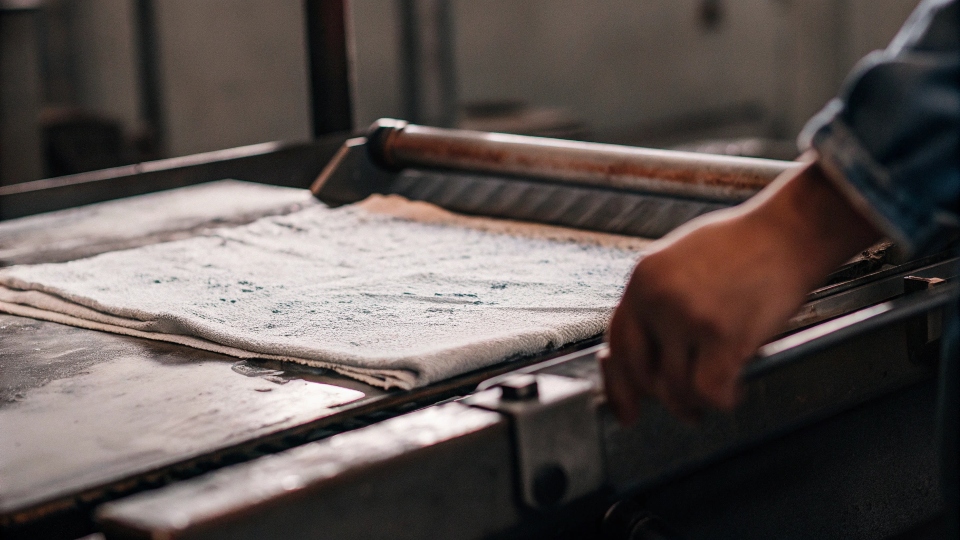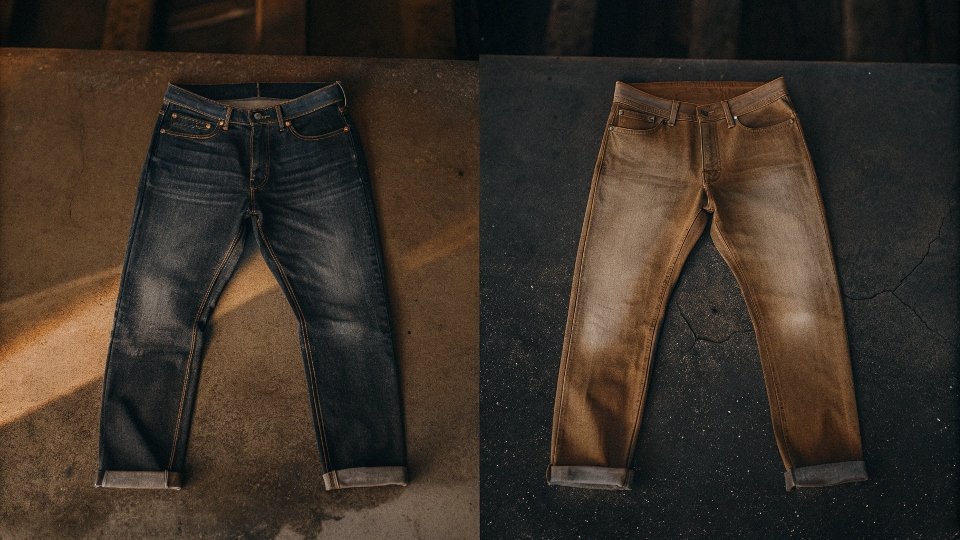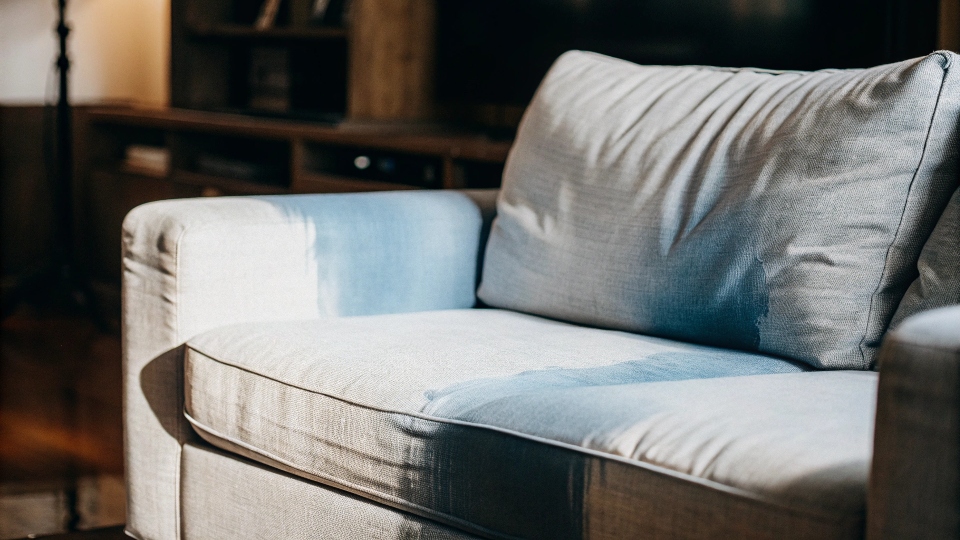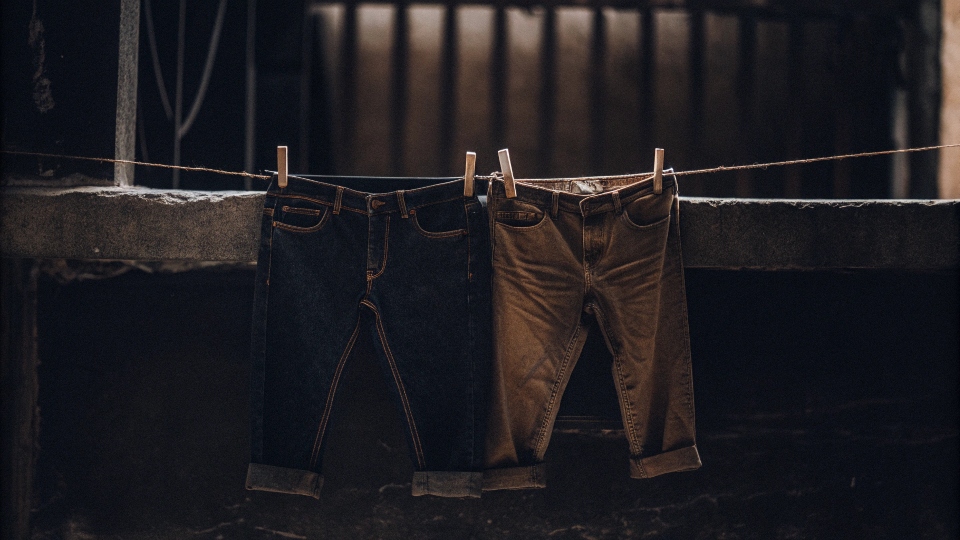You've just bought the perfect pair of dark jeans1. You're eager to wear them, but what about the legendary dye bleed2? Is a pre-wash necessary or just a myth?
Yes, you should wash most new jeans before wearing them. This critical first wash removes excess indigo dye to prevent bleeding, washes away finishing chemicals that can irritate skin, and ensures proper hygiene.
In my factory, the final step before packing is often applying a light starch or resin to give jeans a crisp, clean look on the store shelf.
We call this "finishing." These chemicals are safe, but they aren't really meant to be worn against your skin for long periods. They, along with any loose dye particles from the washing process, are designed to be washed away in your first home laundry cycle.
That's why the 'to wash or not to wash' debate is so important for getting the best experience from your new garment.
Should I wash jeans right after buying?
You just got home with new jeans and you want to wear them out tonight. But you pause, wondering if skipping a wash will lead to blue legs or a stained car seat.
Yes, washing jeans right after buying is highly recommended for most pairs. It prevents the dark indigo dye3 from transferring to your skin, furniture, or other clothes and removes any chemical residues left from manufacturing.
The decision to wash new jeans comes down to solving a few problems we deal with every day in production.
When we dye denim, especially with classic indigo, the process is called "ring dyeing4." This means the dye only coats the outside of the cotton yarn, leaving the core white.
While this is what allows jeans to fade so beautifully, it also means there are loose dye particles on the surface of a new pair.
The Problem of Excess Dye
This loose indigo is the main culprit behind dye transfer, or "crocking."
If you wear unwashed dark jeans and sit on a white sofa or a light-colored car seat, that dye can rub off and leave a permanent stain. It can also stain your hands, your legs, and lighter-colored shoes or shirts.
A quick first wash rinses away the vast majority of this excess dye, making them safe to wear with other items.
Chemicals and Comfort
As I mentioned, we use finishing agents like starch to make jeans look sharp in the store. These agents can make the fabric feel stiff and can sometimes irritate sensitive skin.
Washing your jeans softens the fabric and removes these residues, making them much more comfortable from the very first wear.
Do new jeans have to be washed?
You've heard from denim enthusiasts that you should never wash raw denim. Now you're wondering if that rule applies to the regular pair of jeans you just bought from a major brand.
For over 95% of jeans sold today, yes, they should be washed. The only major exception is "raw" or "unsanforized" denim, where enthusiasts intentionally avoid washing to create unique, high-contrast fades.
The advice you hear from denim purists is for a very specific type of product. Let me explain the difference from a manufacturer's point of view.
Raw Denim vs. Washed Denim
Almost every pair of jeans we produce in our factory goes through a washing process before it's shipped to the store.
This pre-washing softens the fabric, controls shrinkage, and creates a specific color or faded look. However, there is a niche market for raw denim (also called "dry denim").
These jeans are completely unwashed. They are stiff, dark, and uniform in color. The idea is that the owner wears them for months without washing.
The creases from sitting and bending wear away the indigo dye, creating sharp fade patterns like "whiskers" and "honeycombs" that are unique to the wearer's body. For these jeans, washing is avoided on purpose.
For the other 95% of jeans you buy, they've already been washed. The goal is no longer to create your own fades, but to maintain the look the designer intended. Washing these jeans will not harm them; in fact, it is the intended next step.
Is it okay to wear new jeans without washing them?
The urge to wear your new jeans right away is overwhelming. You think, "I'll just be careful." But is it really okay, or are you setting yourself up for a disaster?
While you can physically wear them, it's not recommended. You risk staining light-colored furniture, shoes, and other clothing with bleeding dye. You also expose your skin to potential irritants from finishing chemicals used in production.
I have heard many stories from brands and customers about the consequences of not washing new jeans. It's a risk that is simply not worth taking in most cases. The two main problems are very real. First, the indigo transfer is no joke.
I have seen photos of light grey suede car seats with blue streaks, expensive white leather sneakers turned blue at the ankle, and white t-shirts stained blue around the waist.
The dye can be very difficult, if not impossible, to remove from some materials. Second, while the finishing chemicals are industry-standard and safe, a small percentage of people have skin that is sensitive to these starches and resins, leading to rashes or itchiness. A simple wash eliminates both of these significant risks.
| Risk of Not Washing | Why It Happens | How to Mitigate (If You Must Wear) |
|---|---|---|
| Dye Stains on Property | Excess surface indigo dye3 rubs off on contact. | Wear only with dark clothes and shoes. Avoid light-colored furniture and car seats. |
| Skin Irritation | Chemical residues from the finishing process. | This is hard to predict. The risk is low but real for sensitive skin. |
| Future Fit Issues | The fabric has not gone through its initial home shrink. | The jeans might fit perfectly now but become too short or tight after you eventually wash them. |
How do you wash new jeans for the first time?
Okay, you're convinced. It's time to wash them. But the fear of them coming out of the machine too small, faded, or streaky is real. How do you do it right?
For the first wash, turn your jeans inside out and wash them alone in cold water with a mild, color-safe detergent5. To prevent shrinking and fading, skip the dryer and hang them to air dry instead.
Washing jeans for the first time is simple if you follow a few key steps. This is the process we recommend to all our brand clients to pass on to their customers. It's designed to protect the color, fit, and fabric of the garment.
- Read the Care Label: This is always the first step. The manufacturer knows the fabric and dye best. Follow their specific instructions.
- Turn Them Inside Out: This is crucial. Turning the jeans inside out protects the outer surface from the abrasive tumbling action of the washing machine. This significantly reduces color loss and keeps the jeans looking new for longer.
- Wash Them Alone: For the first wash, give your jeans their own solo cycle. So much excess dye can be released that it can easily stain an entire load of other clothes.
- Use Cold Water: Heat is the enemy of indigo dye. Hot water opens up the cotton fibers and causes the dye to bleed out, leading to rapid fading. Cold water cleans the jeans effectively while keeping the color locked in.
- Use a Mild Detergent: Choose a gentle detergent that is designed for dark colors. Avoid anything with bleach or "optical brighteners," which can strip the color.
- Air Dry, Don't Tumble Dry: The high heat of a machine dryer is the number one cause of unwanted shrinkage. It can also cause the fabric to weaken over time. Hang your jeans by the waistband to air dry.
Conclusion
Washing new jeans is a simple, protective step. It prevents dye stains, removes chemicals, and sets the final fit, ensuring your new investment looks great for years to come.
-
Explore styling tips to make the most of your new dark jeans and elevate your wardrobe. ↩
-
Learn effective methods to prevent dye bleed and keep your clothes looking fresh. ↩
-
Discover the history and process of indigo dye in denim production. ↩ ↩
-
Explore the ring dyeing technique and its effect on denim's appearance. ↩
-
Explore the advantages of using color-safe detergent for your laundry. ↩

